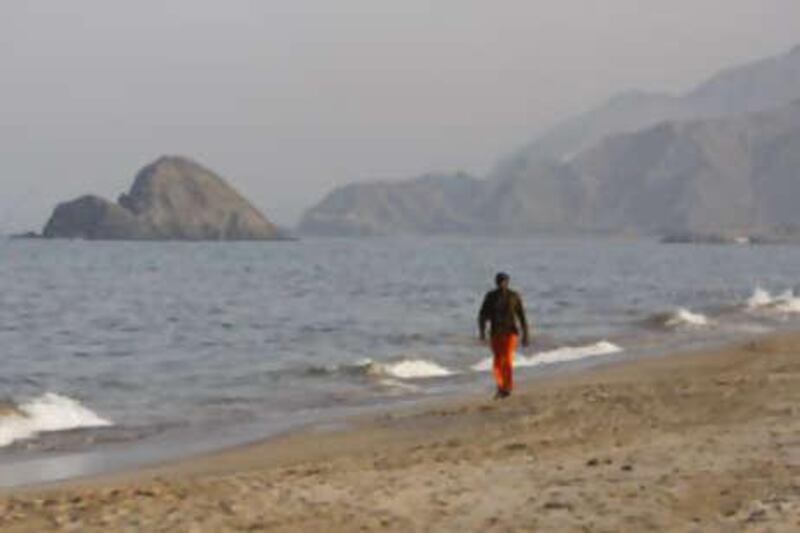The red algal bloom that has plagued the UAE's north-east coast for the past two months is starting to kill its coral reefs. The bloom, known as a red tide, has already been blamed for the death of tonnes of fish but now divers are reporting signs of coral bleaching in many areas. This indicates the algae may now be attacking the tiny organisms the reef relies on for its survival. The microorganisms give coral its bright colours and when they start dying off the coral turns white.
Scuba divers saw the first signs of bleaching a week ago. It seems to be most evident in the area around Dibba Rock, which was one of the east coast's most popular reefs. "Dibba Rock is like a cemetery and the water smells bad. Corals are bleached," said Jeffrey Catanja, a manager at the Sandy Beach Dive Centre. The reefs' inhabitants, which included sea turtles, many types of tropical fish and occasionally young sharks, have vanished, Mr Catanja said.
"You can still see some small groupers but they are struggling," he said. The microorganisms, called zooxantheallae, are probably dying due to lack of sunlight as the thick film of red-brown algae blocks the sun's rays, said Barbara Lang-Lenton, a marine biologist. Bleached coral can recover if colonised again by zooxantheallae, but if they are absent for a long time, the coral dies. Coral at most dive sites on the east coast and the Mussandam Peninsula have been affected by bleaching, said Christophe Chellapermal, the owner of Nomad Ocean Adventures.
The murky red-brown water spreads about eight kilometres into the sea from shore, to a depth of five to six metres, Mr Chellapermal said. Most of the fish found dead in the waters are puffer fish, damsel fish or surgeon fish, he said. The likely cause of death is a lack of dissolved oxygen in the water, caused by the bloom. For the fishing industry, apart from having lost some of its current stock, the effect on future fish stocks could be disastrous.
And the red tide has cost diving operators thousands of dirhams already. They are now worried about the scale of losses over the busy holiday period. "Yesterday we did not have any divers here," said Mr Catanja. "We should be very busy during November and December but instead, this feels like summer [when diving bookings are at the lowest]." Mr Chellapermal said: "The only thing that will save us is the temperature dropping. I closed the dive centre for almost all of November. It is a disaster, I have lost all my business for that month."
Algae are microscopic organisms that are an important marine food source. Under certain natural or man-made conditions, algae can multiply so rapidly that they form dense patches in the water. Depending on the colour of the organisms, they can cause the water to appear murky in shades of brown, red, pink, yellow or green. If the algae multiply too rapidly, they deplete the oxygen dissolved in water, causing fish to suffocate.
Some algae are toxic and a threat to the people who swim in algae-infested water, or who eat seafood from those areas. Of the 20 species of algae common in the UAE, nine are toxic and represent a health concern. vtodorova@thenational.ae





